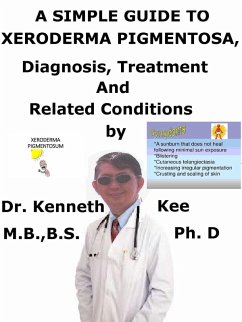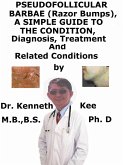I was watching a movie called Midnight Sun: The story is about a teenage girl with the genetic disorder, Xeroderma Pigmentosum which stops her from going out into sunlight.
When she gets together with a boy, she struggles to decide whether to inform him about her neurodegenerative disorder or pretend to live a normal life.
In the end she was exposed to the sunlight and died from brain complications of the disease.
Xeroderma pigmentosum (XP) is a very rare a rare autosomal recessive genetic disorder that results due to mutations in nucleotide excision repair.
Xeroderma pigmentosum is produced by cellular hypersensitivity to ultraviolet (UV) radiation, as a result of a defect in the DNA repair system.
The nucleotide excision repair system is able to remove ultraviolet-induced injury to DNA, such as pyrimidine dimers and pyrimidines 6-4 pyrimidones.
The development of xeroderma pigmentosum is caused by the accumulation of un-repaired DNA destruction.
Xeroderma pigmentosum is a skin disorder where a person is:
Highly sensitive to sunlight,
Prone to premature skin ageing and
Prone to occasional progressive neurological degeneration
Prone to developing skin cancers.
Xeroderma pigmentosum is an autosomally recessive inherited disease, which indicates that a faulty xeroderma pigmentosum gene comes from each parent.
People who carry the xeroderma pigmentosum trait have one xeroderma pigmentosum gene and one normal gene and do not show signs or symptoms of the disease.
The features of xeroderma pigmentosum are due to an impaired nucleotide excision repair (NER) system.
At least 8 different gene abnormalities or complementation groups have been found in different families (XPA to XPG) and XP variants resulting in varying disease severity.
The most frequent subtype in the USA is a mutation in the gene XPC.
Xeroderma pigmentosum happens worldwide and involves men and women of all races.
All patients with xeroderma pigmentosum will manifest skin changes due to severe sun sensitivity.
Since XP inheritance is in an autosomal recessive pattern, patients do not normally have a family history of XP, and the parents are healthy.
The disease normally goes through 3 stages.
The first stage happens around 6 months after birth (skin appears normal at birth).
Areas exposed to the sun such as the face manifest with reddening of the skin with scaling and freckling.
These skin changes go on to the neck and lower legs, and in severe cases, to the trunk.
The second stage begins with continued sun exposure and is featured by:
Poikiloderma
Skin atrophy
Telangiectasia
Mottled and hypo-pigmentation.
They also present with other skin changes due to actinic damage such as telangiectasias and actinic keratoses and also develop progressive premature aging of the skin e.g., atrophy, xerosis, and wrinkling.
The third stage is the formation of actinic keratoses and skin cancers.
These may happen as early as age 45 years and a mean of 8 years.
They are more frequent in sun-exposed areas such as the face and involve:
Basal cell carcinoma
Squamous cell carcinoma
Melanoma
Patients may also manifest with oral, ophthalmologic, and neurological manifestations of the disease.
Xeroderma pigmentosum can normally be decisively diagnosed by measuring the DNA repair factor from skin or blood samples.
The main aim of treatment is total protection from UV light (sun avoidance)
TABLE OF CONTENT
Introduction
Chapter 1 Xeroderma Pigmentosa
Chapter 2 Causes
Chapter 3 Symptoms
Chapter 4 Diagnosis
Chapter 5 Treatment
Chapter 6 Prognosis
Chapter 7 Hyper-pigmentation
C...
Dieser Download kann aus rechtlichen Gründen nur mit Rechnungsadresse in A, B, CY, CZ, D, DK, EW, E, FIN, F, GR, H, IRL, I, LT, L, LR, M, NL, PL, P, R, S, SLO, SK ausgeliefert werden.









